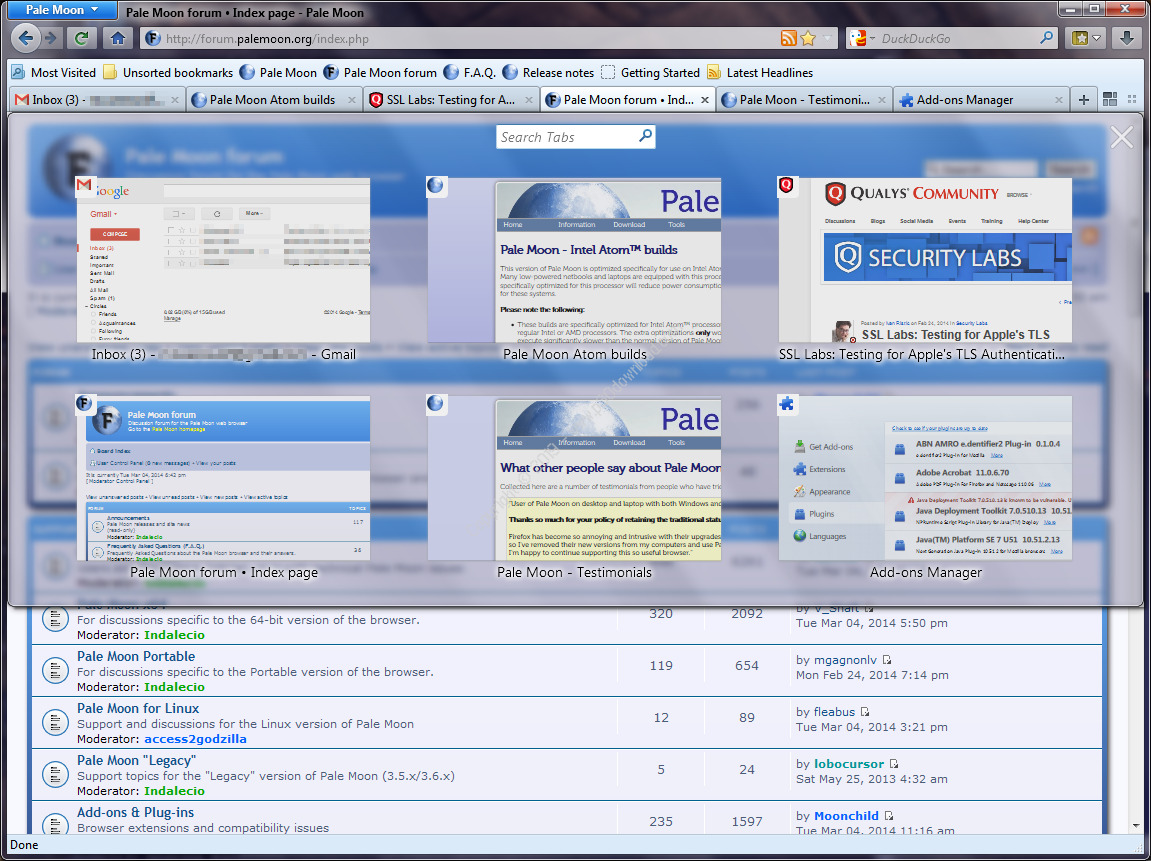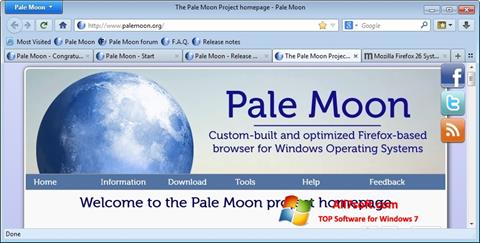
Also – judging from the forum posts – it appears that many crashes are triggered when running Pale Moon in KDE4 with the oxygen theme selected for your GTK+2 programs. See this LQ thread for more details about problematic web sites which my binary shows without issue. The resulting package seems to be stable, and it is not crashing on web sites where other 3rd party builds seem to falter.

And the optimization I chose is “-Os” a conservative optimization with a focus on smaller code size, instead of better speed. I used the default gcc compiler of the Slackware release I built the package on (Slackware 14.2 has gcc-5.3.0 and -current had 5.4.0 at the time when I ran the compilation… of course, now -current has gcc-7.1.0). I took inspiration from Slackware’s mozilla-firefox.SlackBuild and then did two things crucially different from the official recommendations. I decided that I was curious enough to write a SlackBuild of my own, and see what I thought of Pale Moon. The scripts on do not re-distribute binaries so they are not affected by these policies. Builds that do not conform to these policies, must use unofficial branding (a monochrome logo, and the name “New Moon”). The lead developer of Pale Moon is also very strict about the use of his official branding by 3rd party source builds that are re-distributed as unofficial binaries. one that is not prone to crashing all the time on sites that are heavy on media or JavaScript). The Pale Moon developers have decided that these conditions are necessary to compile their sources into a stable browser (i.e. The other, called PaleMoon, is a build-from-source which attempts to stay close and true to the Pale Moon project’s official recommendations about the use of compilers (GCC 4.x but not newer) and optimizations (compiler flags are “-O2 -msse2 -mfpmath=sse”). One, called palemoon, will wrap the official binaries into a Slackware package.

On ( SBo) you will find two different scripts to create a Pale Moon package. Yet, Pale Moon promises to give you a contemporary user experience regardless. You can easily setup your own private sync server at home. Also, Pale Moon supports the old Mozilla Sync (Weave 1.x). The Australis UI ruined Firefox for many people. Firefox and Chrome are both plagued by code bloat.

Pale Moon has the look and feel of Firefox like it was years ago, which has a certain appeal. People are drawn to Pale Moon because it promises to be a browser that is leaner than the modern-day Firefox. The community has a large vote in the direction the Pale Moon browser’s features are taking. Since then, the project has steadily been diverging from the Firefox codebase, optimizing its Gecko layout engine and rebranding that to ‘Goanna’ (which is the name of just another lizard). The Pale Moon browser was forked off the Mozilla Firefox codebase a couple of years ago, before Firefox switched to the Australis User Interface.


 0 kommentar(er)
0 kommentar(er)
